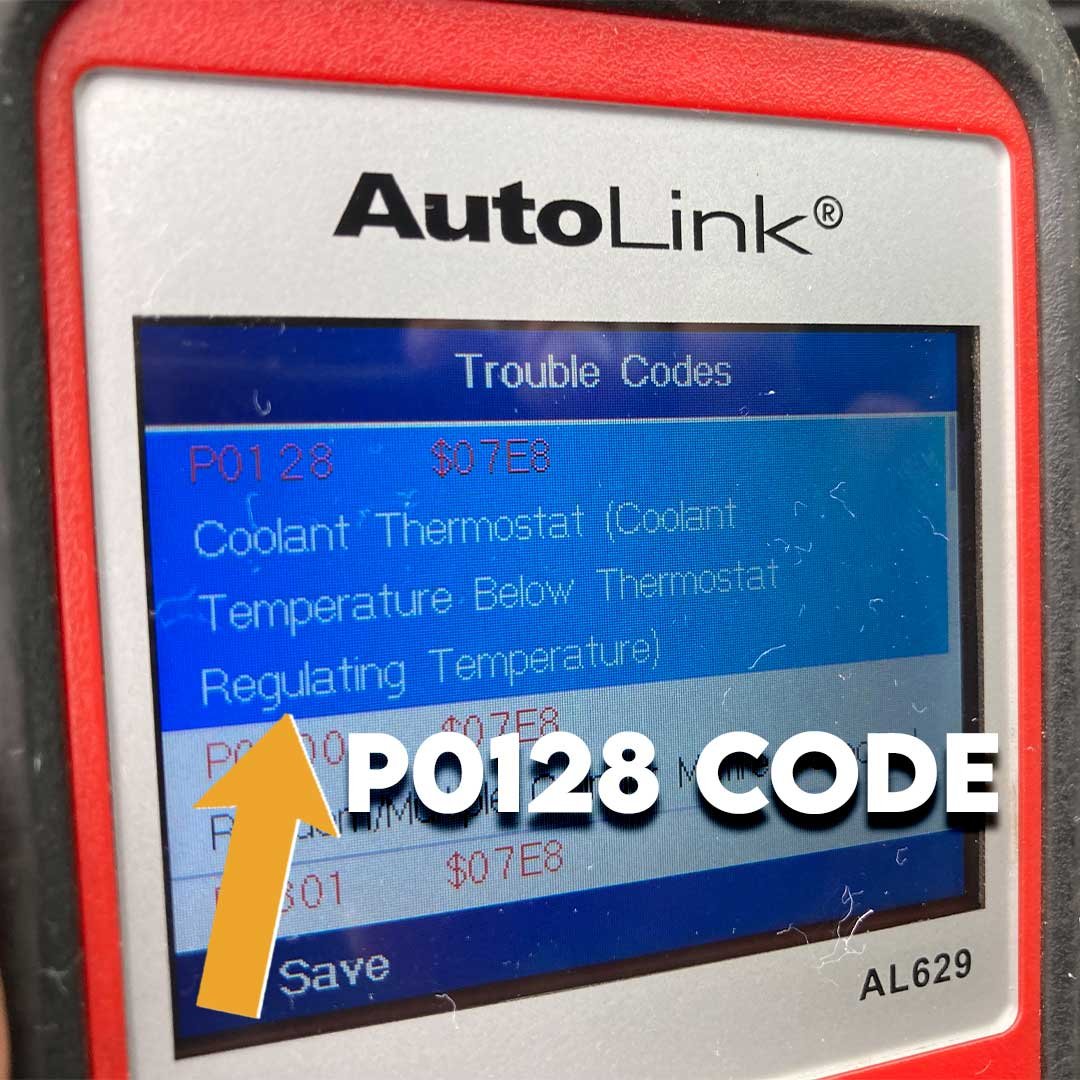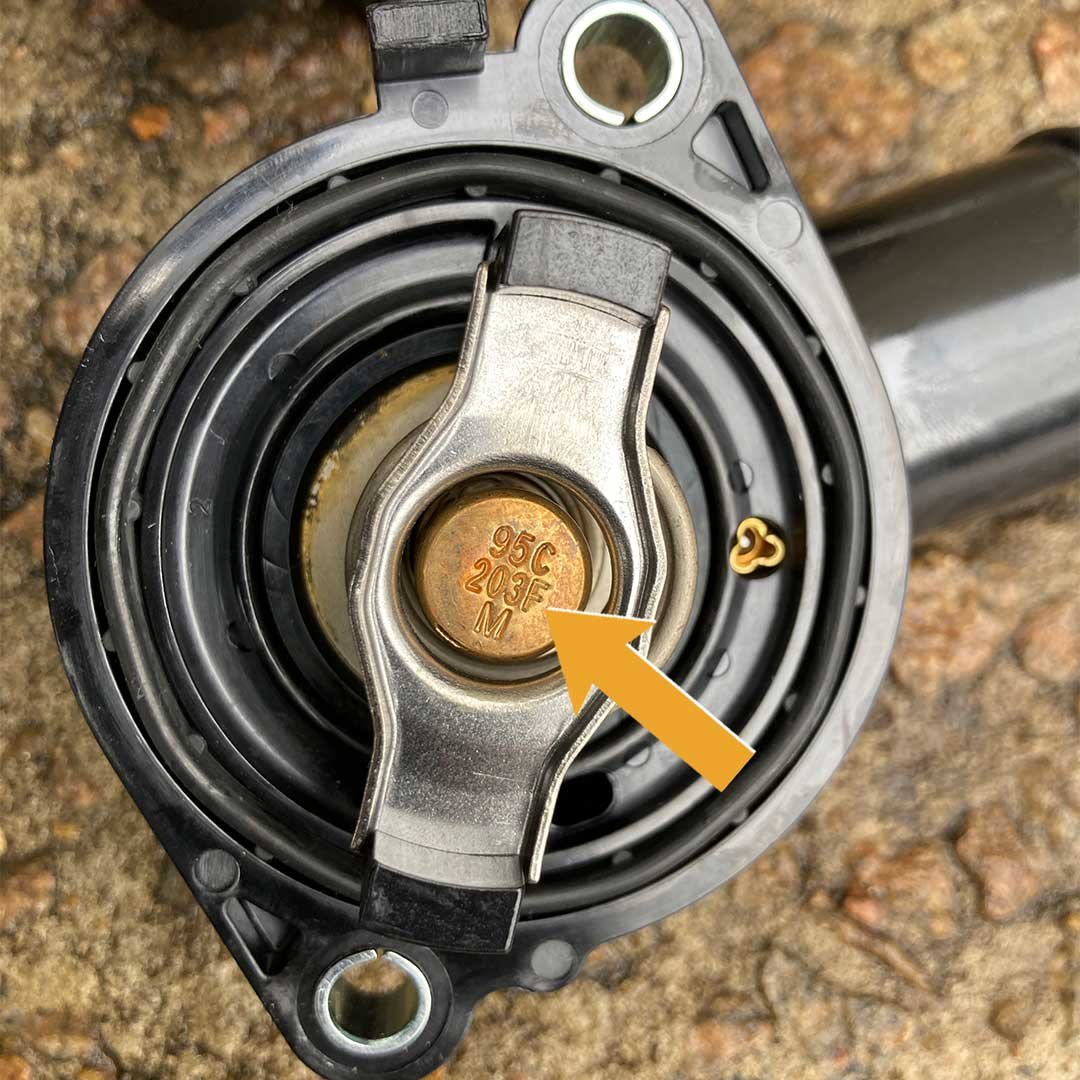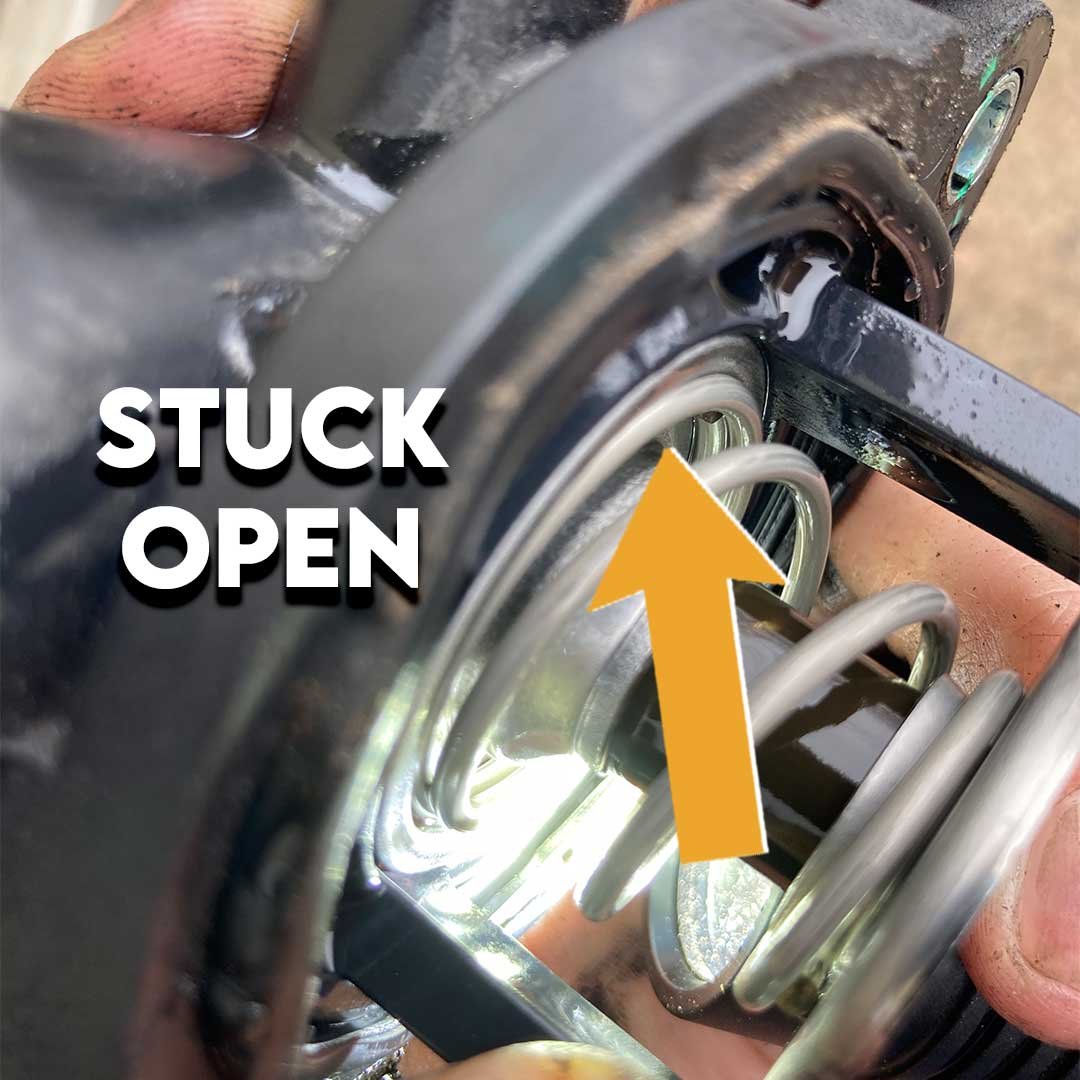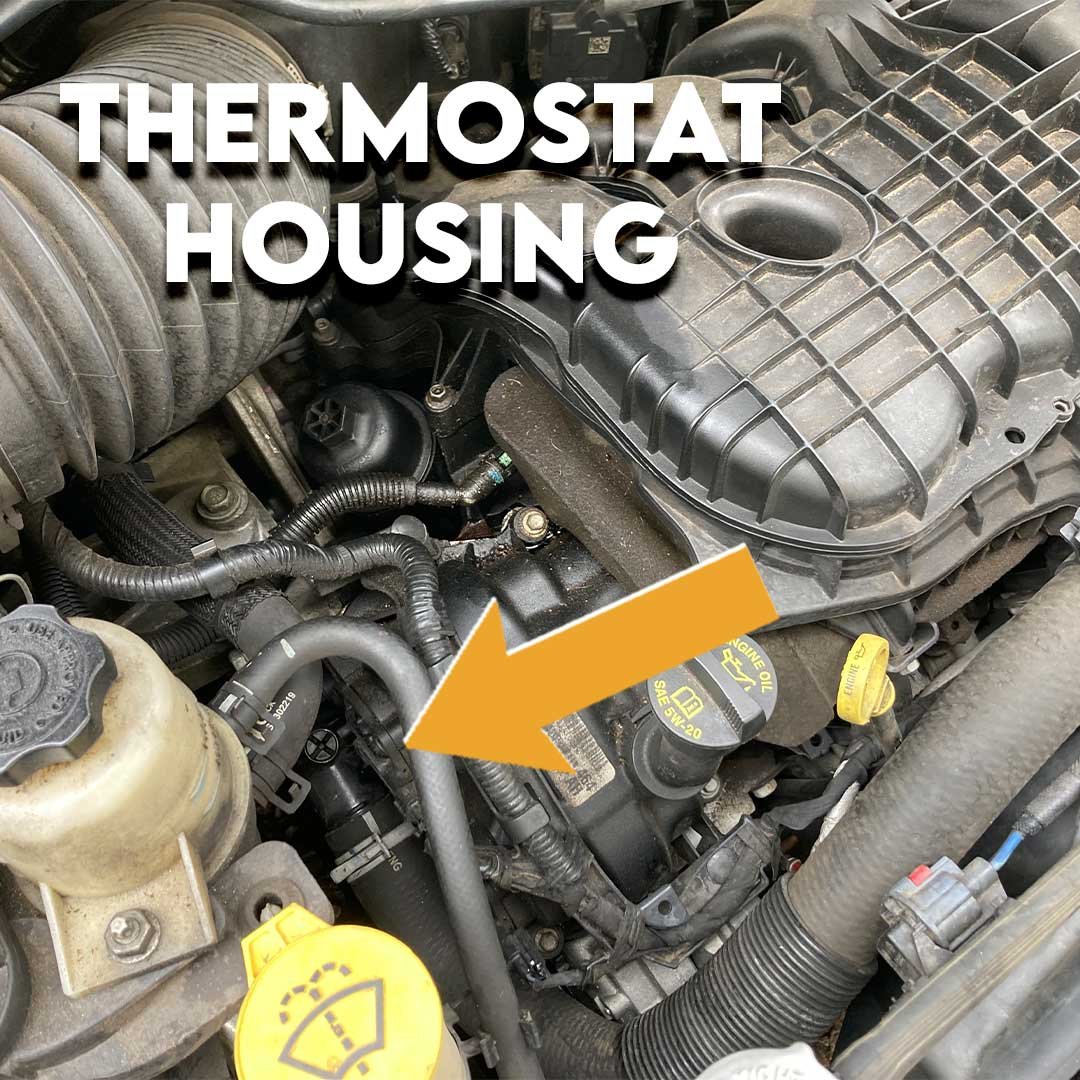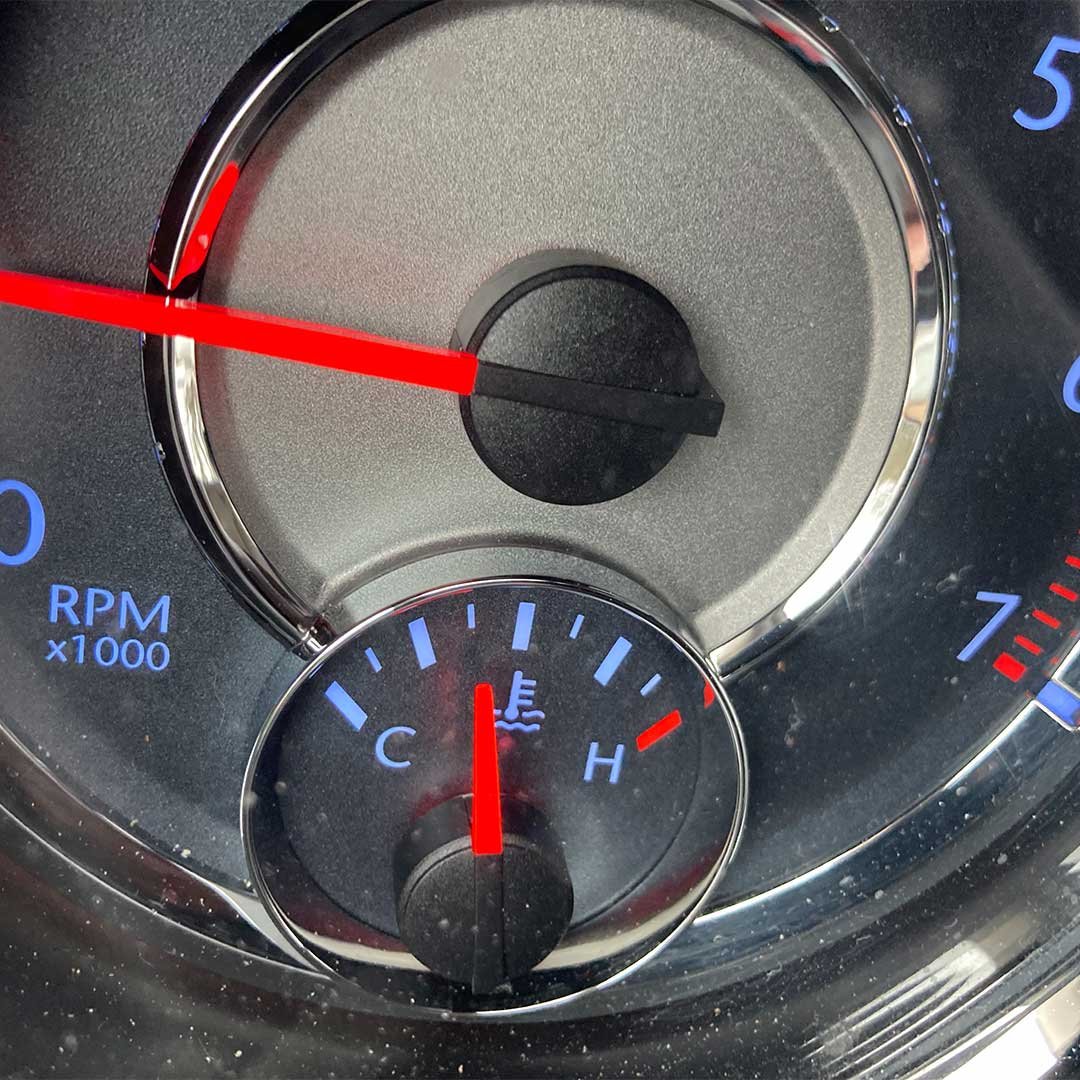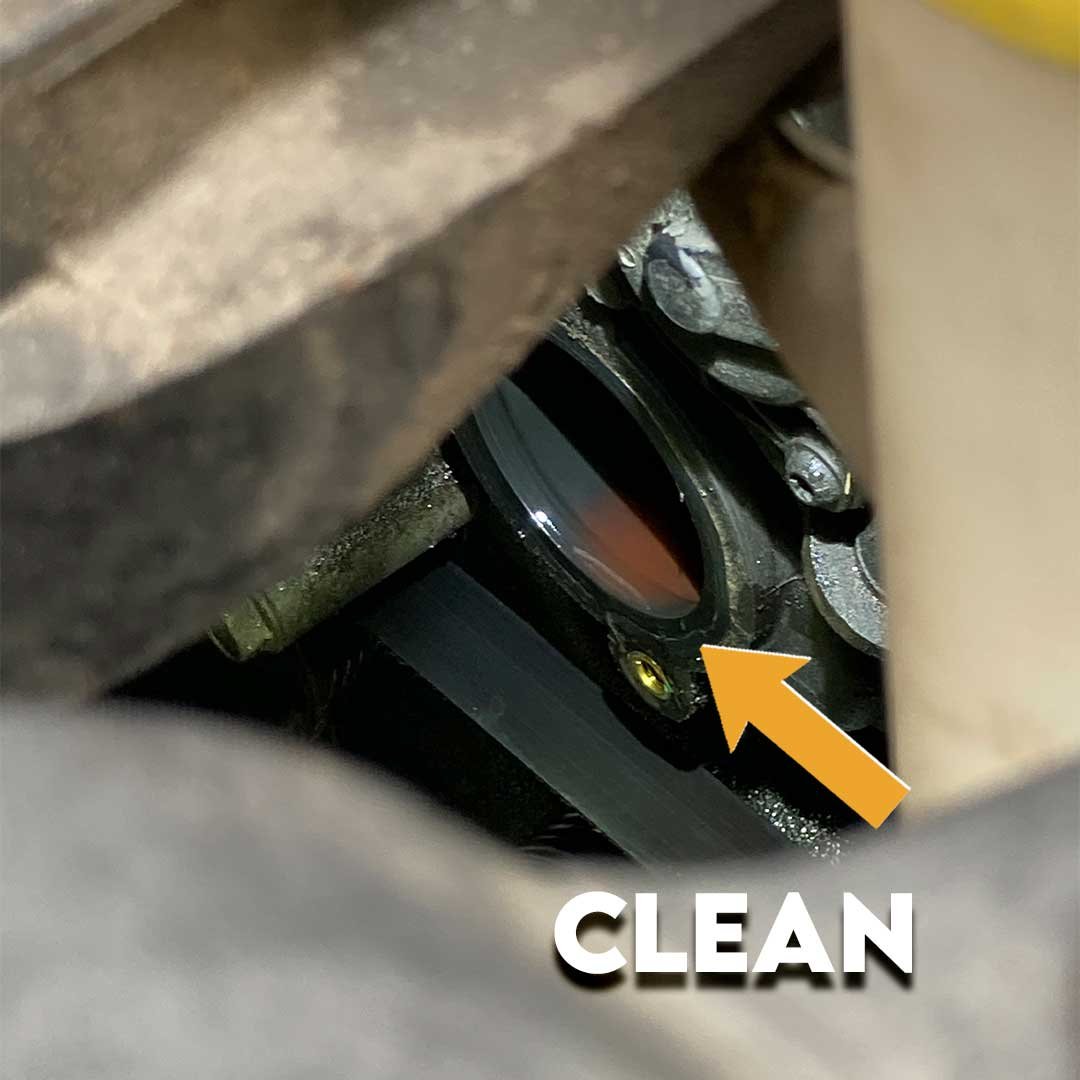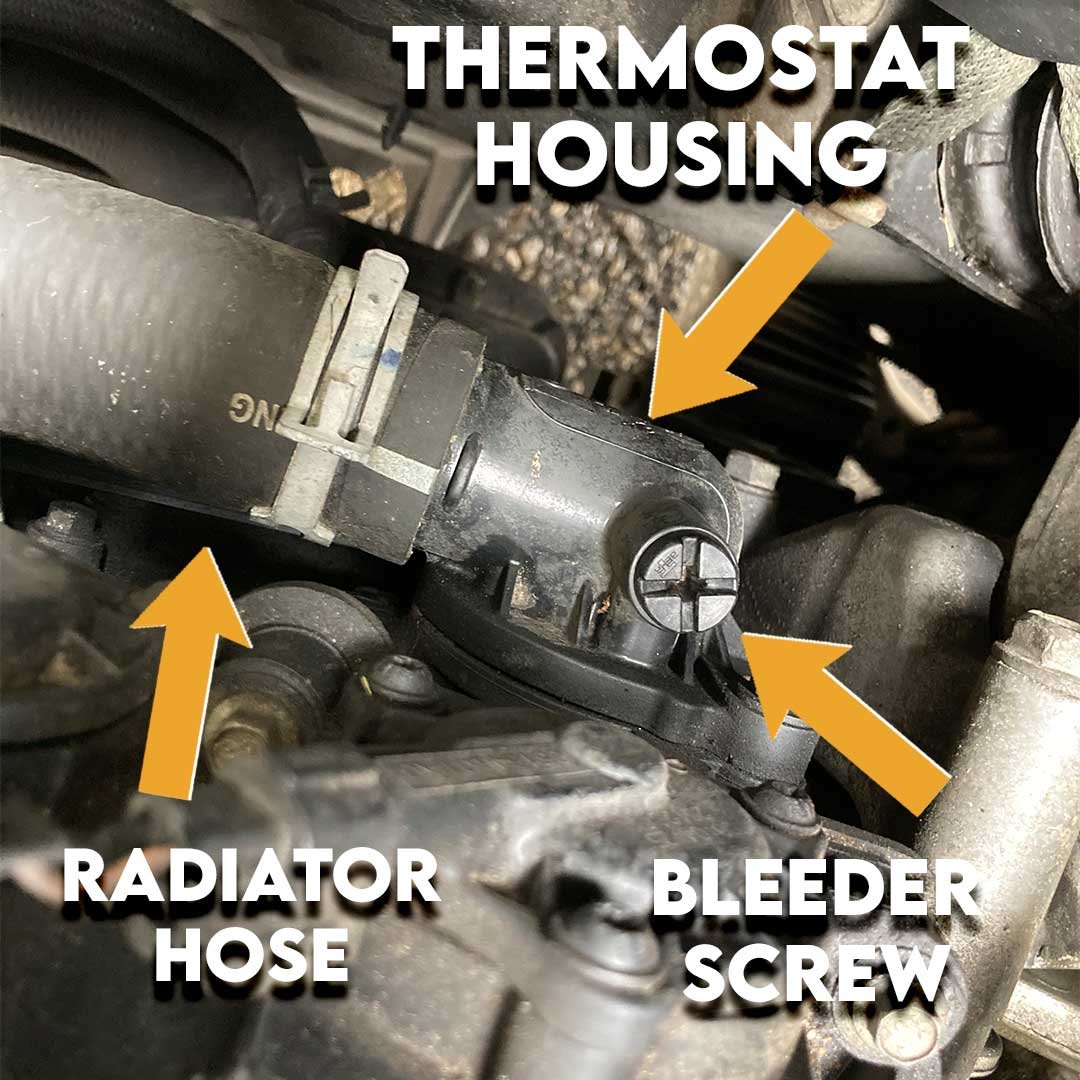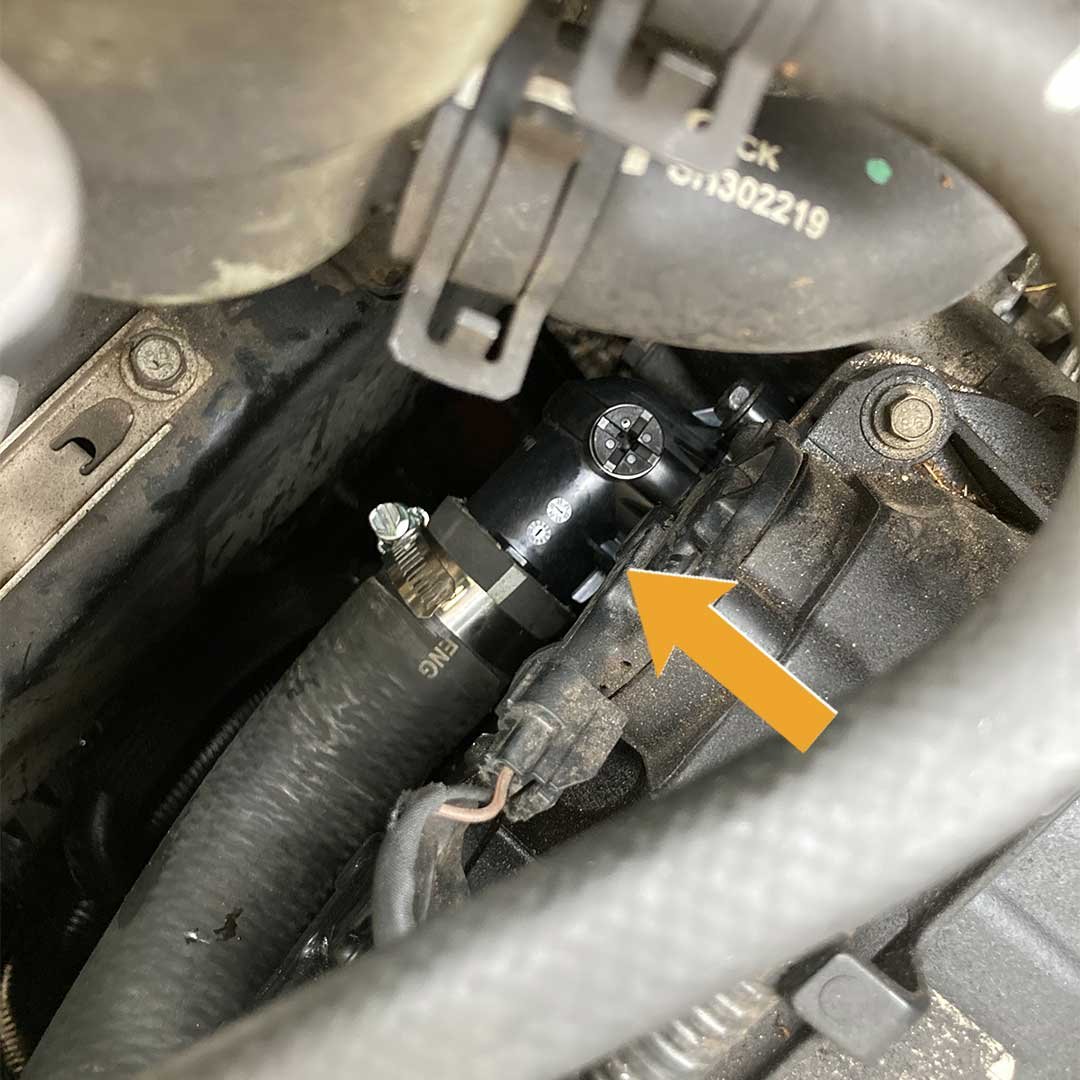P0128 on a Ram 1500 with 3.6L (Thermostat Location)
Affiliate Disclosure: As an Amazon Associate, we may earn commissions from qualifying purchases from Amazon.com.Here is a list of tools I use every day at the shop. Let me know if you use them too in the comments!The 3.6-liter engine from Chrysler has become a headache for Ram 1500 owners. From a check engine light to losing coolant and leaking oil, the 3.6-liter engine has been a nightmare. In this article, we will look at a common leak that plagues the 3.6-liter engines.
A common trouble code (or DTC) that causes the check engine light is the code P-0128 (P0128).
What does error code P0128 mean on a Ram 1500?
P0128 - Thermostat Rationality
The P0128 code indicates a problem with the cooling system (coolant system). The engine control module notices that the engine temperature is below where it should be operating within a specified amount of time.
The engine control module uses the engine coolant temperature sensor to monitor the engine's temperature. An engine coolant thermostat will regulate the amount of flow of coolant through the engine to obtain the optimal temperature.
A thermostat will stay closed until the engine reaches operating temperature. After the operating temperature is obtained, the thermostat and radiator fans will keep the engine's temperature in a specific range.
This thermostat opens at 203F.
What year did the Ram 1500 have the 3.6L engine?
The 3.6-liter engine was introduced in the 2012 Ram 1500 models and is available through the present models.
What causes the P0128 code on a Ram 1500?
The most common cause for the P0128 code on a Ram 1500 is a faulty thermostat.
A faulty thermostat can be what is described as a "stuck open thermostat."
Other issues can be low coolant, a bad radiator fan or water pump, an inaccurate engine coolant temperature sensor (ECT sensor), or a bad engine control module.
How do I fix code P0128 on a Ram 1500?
The best way to fix P0128 is to find the root cause of the problem and repair it.
A quick diagnostic process for a p0128 is:
Define the code
Check your coolant (with a cold engine. Never open the cooling system when the engine is hot)
Use a scan tool to monitor the temperature of the coolant and the length of time to reach normal operating temperature
Determine if the thermostat stays open
Replace the thermostat
Where is the coolant thermostat and thermostat housing located on a Ram 1500?
The thermostat and thermostat housing is located on the front of the 3.6-liter engine on the Ram 1500.
Frequently Asked Question:
Where do I find wiring diagrams and step-by-step repair procedures for Rams?
The best online resource I use is Alldatadiy.com.
I used it for this case study to find the correct procedure for this Ram 1500.
What are some symptoms of the P0128 code?
Here are some symptoms of a P0128 code:
A check engine light
The temperature gauge (temp gauge) may not reach the proper operating temperature or normal range
Cooling fans run constantly
Lack of heat or hot air coming out of the vents
Can I still drive my car with a P0128 code?
Generally, you can drive with a P0128 code but always monitor the temperature gauge. You may notice that with this code, the temperature gauge will not reach normal operating temperature.
What are the tools I need to change this part?
Some tools that you will need are:
A socket set to remove the bad thermostat.
A set of pliers to remove the hose clamps that is on the upper radiator hose
New coolant to fill the coolant system and the overflow tank (You don't want to have low coolant)
Rag to clean the mating surface of the new thermostat.
Coolant fill kit
All of the air has to be removed from this Cooling System or engine damage will occur!
Make sure your engine’s coolant is filled to normal levels. Air in the cooling system can cause damage when the engine heats up.
The correct operating temperature can only be obtained if all the air is bled out of the cooling system.
Not knowing how to bleed the cooling system properly can take this easy job and make it a horrible nightmare.
Caution - Hot Coolant
DO NOT work on a vehicle that has been operating for an extended period. The coolant in the cooling system can be extremely hot and cause severe burns. Always allow a hot engine to cool off before working on it.
You may want to wait until the next day for the engine to be completely cooled off.
If you have concerns, allow a professional mechanic to replace the part for you.
What other common problems can cause this code?
Although a faulty thermostat is the most likely solution for this code, there are other factors that can cause a P0128.
Other possible causes are:
Engine coolant temperature sensor (Coolant sensor or coolant temp sensor) - If the engine coolant temperature sensor reading is incorrect, it can report the wrong temperature to the powertrain control module (PCM). If the engine coolant temperature sensor reads 120 degrees F while the engine coolant is actually 190 degrees F, then that can cause a P0128.
Coolant level - If the coolant level is incorrect, there is a chance that it will cause a DTC P0128 (Diagnostic Trouble Code).
When you get done installing the new thermostat, clear the trouble codes and monitor the coolant temperature with a compatible code reader. It should increase until it reaches the normal operating temperature.
If you don't have a good code reader, check out the ones below.
Disclaimer and Disclosure:
Make sure all parts mentioned are compatible with your vehicle
Due to factors beyond the control of DiagnosticMechanic.com, it cannot guarantee against unauthorized modifications of this information, or improper use of this information. DiagnosticMechanic.com assumes no liability for property damage or injury incurred as a result of any of the information contained in this website. DiagnosticMechanic.com recommends safe practices when working with power tools, automotive lifts, lifting tools, jack stands, electrical equipment, blunt instruments, chemicals, lubricants, or any other tools or equipment seen or implied in this website. Due to factors beyond the control of DiagnosticMechanic.com, no information contained in this website shall create any express or implied warranty or guarantee of any particular result. Any injury, damage or loss that may result from improper use of these tools, equipment, or the information contained in this website is the sole responsibility of the user and not DiagnosticMechanic.com.
DiagnosticMechanic.com is a participant in the Amazon Services LLC Associates Program, an affiliate advertising program designed to provide a means for sites to earn advertising fees by advertising and linking to Amazon.com. In many of our case studies, articles, and tool reviews, we may earn a small commission when readers purchase products through our links.


